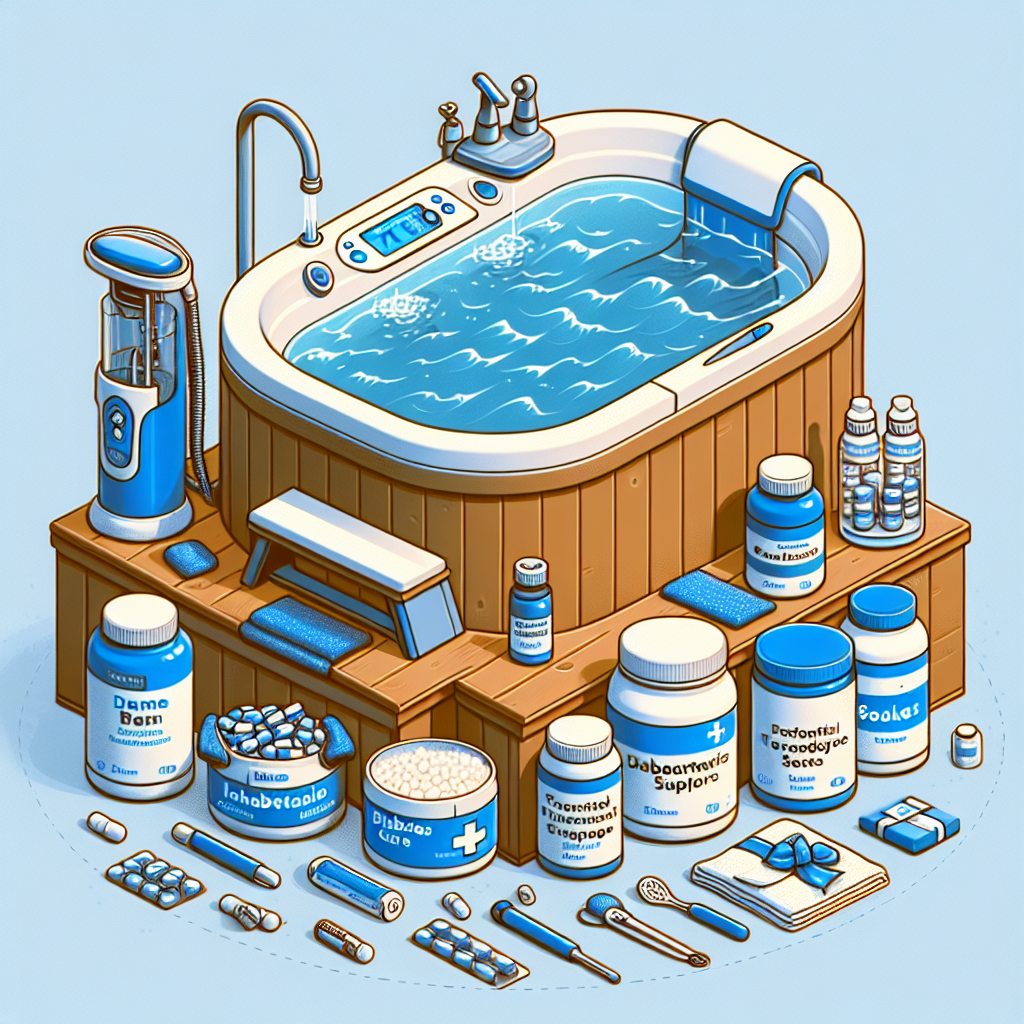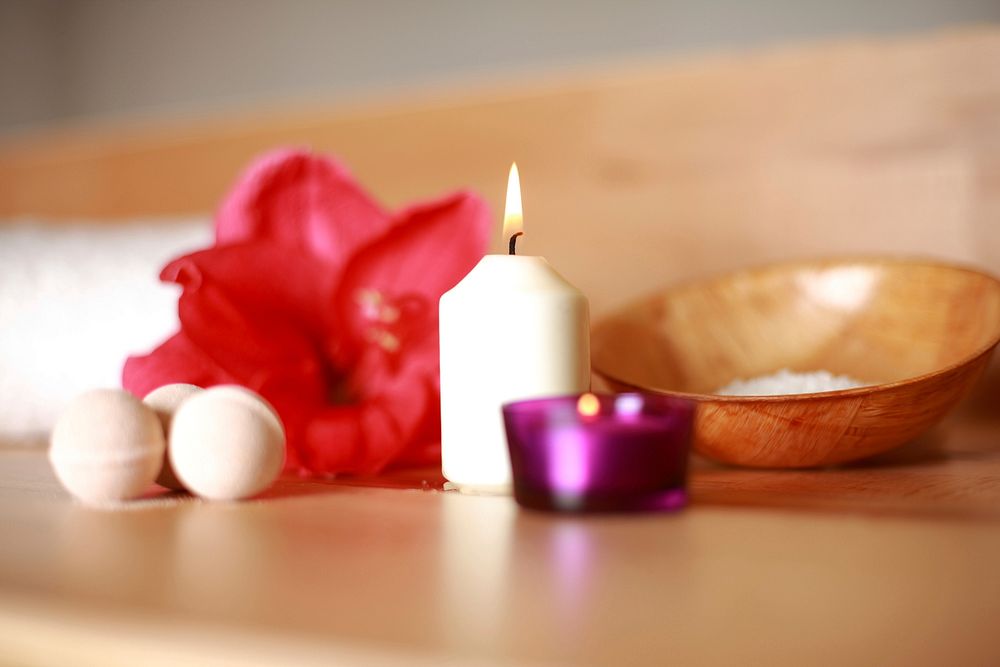
-
Hydrotherapy can lower blood glucose levels by improving circulation to skeletal muscles.
-
Supplements like magnesium, chromium, and cinnamon can further enhance the benefits of hydrotherapy.
-
Epsom salt soaks provide a relaxing way to absorb magnesium, which is essential for blood sugar control.
-
Essential oils such as lavender and eucalyptus can be added to hydrotherapy sessions for additional therapeutic effects.
-
It’s important to follow safety guidelines, especially for diabetic patients, when engaging in hydrotherapy at home.
Reaping the Benefits of Hydrotherapy for Diabetes
When it comes to managing diabetes, finding natural and enjoyable ways to improve wellness can be a game-changer. One such method that’s been gaining attention is hydrotherapy—the use of water to treat various conditions. Let’s dive into how you can make the most of this therapy at home.
Understanding the Role of Warm Water Therapy
Hydrotherapy isn’t just about relaxation; it’s a powerful tool for health. For those with diabetes, warm water therapy can be particularly beneficial. The warmth from the water helps open up blood vessels, which in turn improves circulation. This is crucial for diabetics, as good circulation helps manage blood glucose levels.
The Impact of Hydrotherapy on Blood Glucose Levels
One of the most exciting aspects of hydrotherapy for diabetics is its potential to lower blood glucose levels. When your muscles are well-nourished with oxygen and nutrients from improved blood flow, they use glucose more efficiently. This means that regular warm baths could help you keep your blood sugar in check.
Setting Up Your Home Hydrotherapy Routine
Getting started with hydrotherapy at home is easier than you might think. All you need is a bathtub and warm water. Begin by filling your tub with warm water—not too hot, especially since high temperatures can be risky for those with diabetes. Aim for about 30 minutes of soaking time, but listen to your body; if you feel overheated or uncomfortable, it’s time to get out.
Herbal Remedies and Their Synergistic Effects with Hydrotherapy
Adding herbal remedies to your hydrotherapy routine can amplify the benefits. Certain herbs are known for their blood sugar-lowering properties. For instance, cinnamon can improve insulin sensitivity, while fenugreek seeds may help lower blood glucose levels. When combined with the improved circulation from hydrotherapy, these herbs can be even more effective.
Creating Soothing Soaks with Therapeutic Ingredients
Transforming your bath into a therapeutic oasis is simple with the right ingredients. By adding elements that cater to diabetic health, you can create a soak that not only relaxes your body but also supports your wellness goals.
Recipe for a Diabetic-Friendly Epsom Salt Soak

To make a diabetic-friendly soak, start with Epsom salt, which is high in magnesium—a mineral that’s essential for blood sugar control. Dissolve two cups of Epsom salt in a bathtub filled with warm water. Soak for about 20 to 30 minutes. The magnesium can help reduce insulin resistance, and the warm water will aid in increasing circulation.
Incorporating Essential Oils for Additional Benefits

Essential oils can be a great addition to your hydrotherapy session. For example, adding a few drops of lavender oil can provide a calming effect, which is helpful because stress can negatively affect blood sugar levels. Eucalyptus oil is another great choice as it can help with inflammation, which is often a concern for those with diabetes.
The Power of Temperature: Hot vs. Lukewarm Soaks
The temperature of your soak matters, especially for diabetic patients. Hot water can cause vasodilation, which is beneficial for circulation but can also lead to a sudden drop in blood pressure. Lukewarm water, on the other hand, is less likely to cause such a dramatic effect and is generally safer for those with diabetes. Always check the water with your hand before stepping in to ensure it’s not too hot.
Safe Practices for Hydrotherapy at Home
Hydrotherapy at home can be safe and effective if done correctly. As a diabetic patient, it’s crucial to follow certain precautions to avoid any potential risks.
Avoiding Common Mistakes in Hydrotherapy for Diabetics
One common mistake is overheating the water. High temperatures can cause dizziness and increase the risk of burns, particularly for those who may have neuropathy. Another mistake is not staying hydrated. Always drink plenty of water before and after your soak to prevent dehydration.
Hydrotherapy Precautions for Diabetic Skin
Diabetic skin requires special care. Avoid using harsh soaps or chemicals in your bath, as they can dry out or irritate your skin. After your soak, gently pat your skin dry and apply a moisturizer to keep your skin hydrated. Also, inspect your feet and other areas for any cuts or sores, as diabetes can slow the healing process.
Moreover, never soak alone if you have a history of blood sugar fluctuations that can lead to dizziness or fainting. It’s important to have someone nearby who can assist you if needed.
Frequently Asked Questions
Here are some common questions about hydrotherapy and diabetes:
1. How Does Hydrotherapy Affect Insulin Sensitivity?
Hydrotherapy can improve circulation, which in turn may enhance insulin sensitivity by promoting more efficient glucose uptake in the muscles. This can be particularly beneficial after meals when blood glucose levels are higher.
2. Is Hydrotherapy Safe For All Diabetics?
While many individuals with diabetes can benefit from hydrotherapy, it’s crucial to consult with your doctor first, especially if you have complications such as neuropathy or heart issues. Your doctor can help you understand if hydrotherapy is safe for you and how to do it properly.
3. What Are the Best Times of Day for Hydrotherapy?
There’s no one-size-fits-all answer, but many people find that a warm soak in the morning helps them start the day with better blood sugar levels, while an evening soak can assist with relaxation and sleep. Consider your daily routine and how hydrotherapy can best fit into it.
4. Can Hydrotherapy Replace Exercise for Diabetes Management?
No, hydrotherapy should not replace exercise in diabetes management. Exercise is essential for maintaining healthy blood sugar levels and overall health. Hydrotherapy can be a complementary therapy that helps with relaxation and circulation but does not provide the same benefits as physical activity.
5. How to Monitor Your Blood Sugar Levels During Hydrotherapy?
Always check your blood sugar before and after hydrotherapy to monitor how it affects you. Keep a log to discuss with your healthcare provider. If you notice significant changes in your blood sugar levels, you may need to adjust the duration or frequency of your hydrotherapy sessions.



Leave a Reply